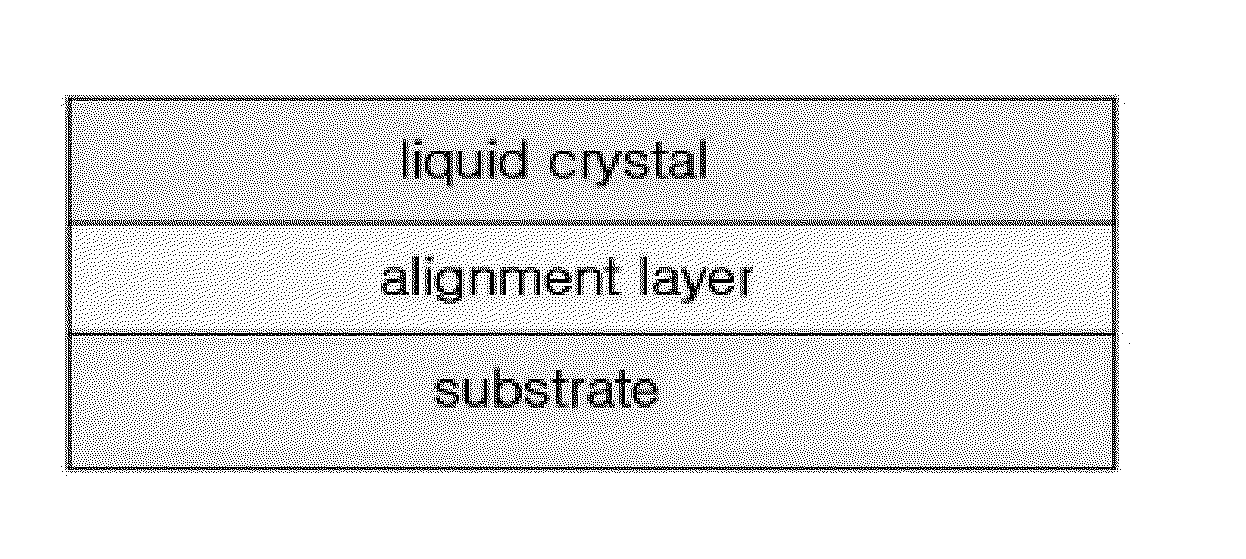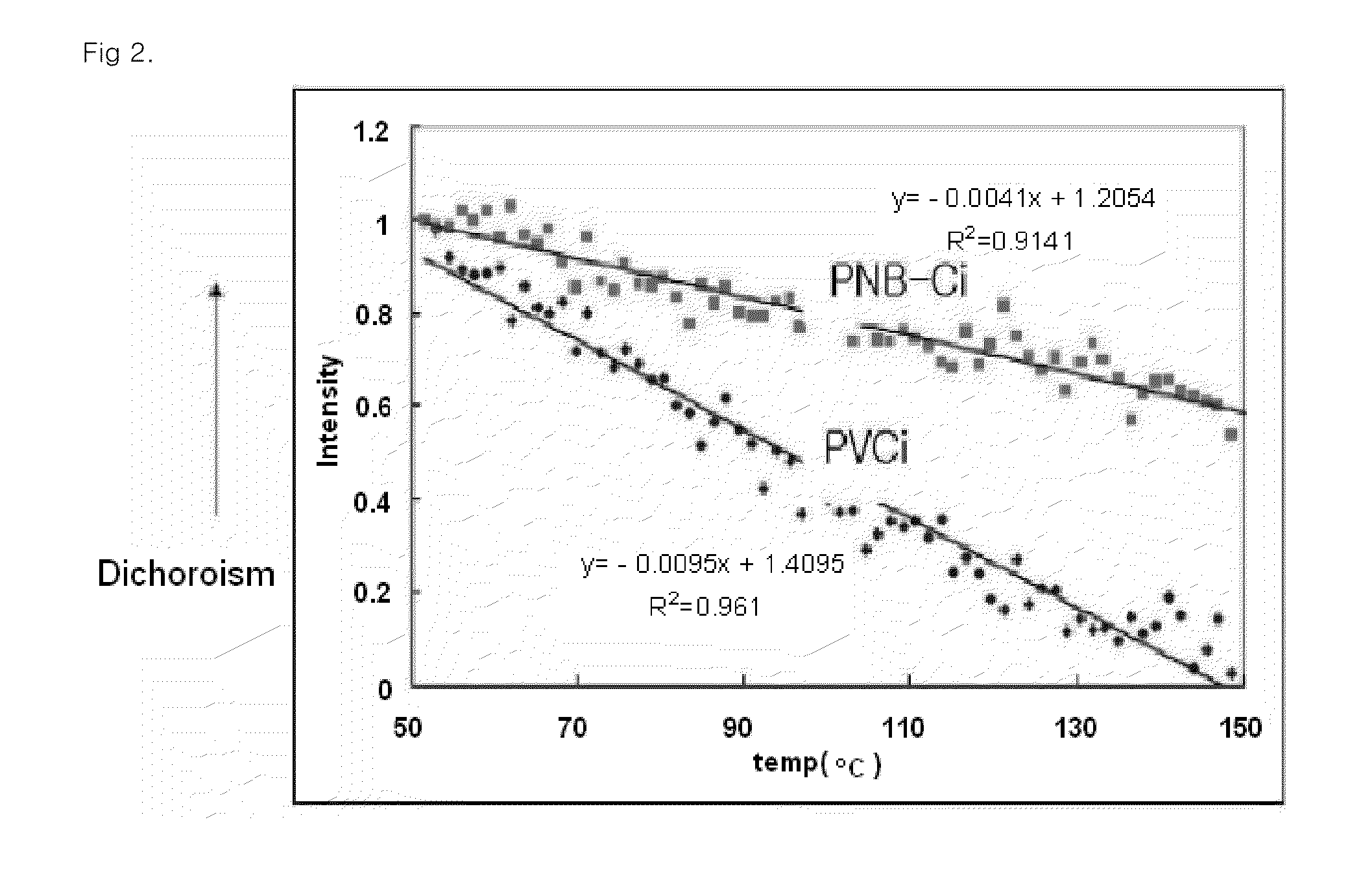Norbornene polymer comprising photoreactive functional group having halogen substituent group, process for preparing the same, and alignment layer using the same
a photoreactive functional and norbornene technology, which is applied in the field of photoreactive norbornene polymer comprising a photoreactive norbornene monomer, process for preparing the same, and alignment layer using the same, can solve the problems of affecting the stability of the alignment layer, affecting the production yield, and destroying the thin film transistor, etc., to achieve better adhesion, improve the orientation, and improve the orientation
- Summary
- Abstract
- Description
- Claims
- Application Information
AI Technical Summary
Benefits of technology
Problems solved by technology
Method used
Image
Examples
example
Preparation Example 1
Synthesis of 4-fluoro-cinnamic acid
[0080]10 g (80.6 mmol) of 4-fluoro-benzaldehyde, 29.5 g (2 eq.) of malonic acid, and 1.21 g (0.1 eq.) of piperidine were added to 33.7 g (3 eq.) of pyridine and stirred at room temperature for about 1 hour. After heating it to 80° C., the mixture was stirred for 12 hours. After the reaction, the resulting solution cooled down to room temperature and was slowly added with 1M HCl until it was titrated to about pH 4. The resulting powder was filtered and washed with water, and then dried in a vacuum oven. (Yield: 90%)
[0081]1H-NMR (CDCl3, ppm) 6.42 (d, 1H) 7.44 (d, 2H) 7.75 (d, 2H) 7.80 (d, 1H).
preparation example 2
Synthesis of 3-fluoro-cinnamic acid
[0082]5 g (40.1 mmol) of 3-fluoro benzaldehyde, 8.38 g (2 eq.) of malonic acid, and 0.34 g (0.1 eq.) of piperidine were added to 9.52 g (3 eq.) of pyridine and stirred at room temperature for about 1 hour. After heating it to 80° C., the mixture was stirred for 12 hours. After the reaction, the resulting solution cooled to room temperature and was slowly added with 1M HCl until it was titrated to about pH 4. The resulting powder was filtered and washed with water, and then dried in a vacuum oven. (Yield: 84%)
[0083]1H-NMR (CDCl3, ppm): 6.43 (d, 1H) 7.12-7.41 (m, 4H) 7.75 (d, 1H).
preparation example 3
Synthesis of 3,4-di-fluoro-cinnamic acid
[0084]10 g (70.4 mmol) of 3,4-di-fluoro-benzaldehyde, 14.65 g (2 eq.) of malonic acid, and 0.59 g (0.1 eq.) of piperidine were added to 16.7 g (3 eq.) of pyridine and stirred at room temperature for about 1 hour. After heating it to 80° C., the mixture was stirred for 12 hours. After the reaction, the resulting solution cooled down to room temperature and was slowly added with 1M HCl until it was titrated to about pH 4. The resulting powder was filtered and washed with water, and then dried in a vacuum oven. (Yield: 95%)
[0085]1H-NMR (CDCl3, ppm): 6.41 (d, 1H) 7.15-7.45 (m, 3H) 7.68 (d, 1H).
PUM
| Property | Measurement | Unit |
|---|---|---|
| temperature | aaaaa | aaaaa |
| Tg | aaaaa | aaaaa |
| temperature | aaaaa | aaaaa |
Abstract
Description
Claims
Application Information
 Login to View More
Login to View More - R&D
- Intellectual Property
- Life Sciences
- Materials
- Tech Scout
- Unparalleled Data Quality
- Higher Quality Content
- 60% Fewer Hallucinations
Browse by: Latest US Patents, China's latest patents, Technical Efficacy Thesaurus, Application Domain, Technology Topic, Popular Technical Reports.
© 2025 PatSnap. All rights reserved.Legal|Privacy policy|Modern Slavery Act Transparency Statement|Sitemap|About US| Contact US: help@patsnap.com



